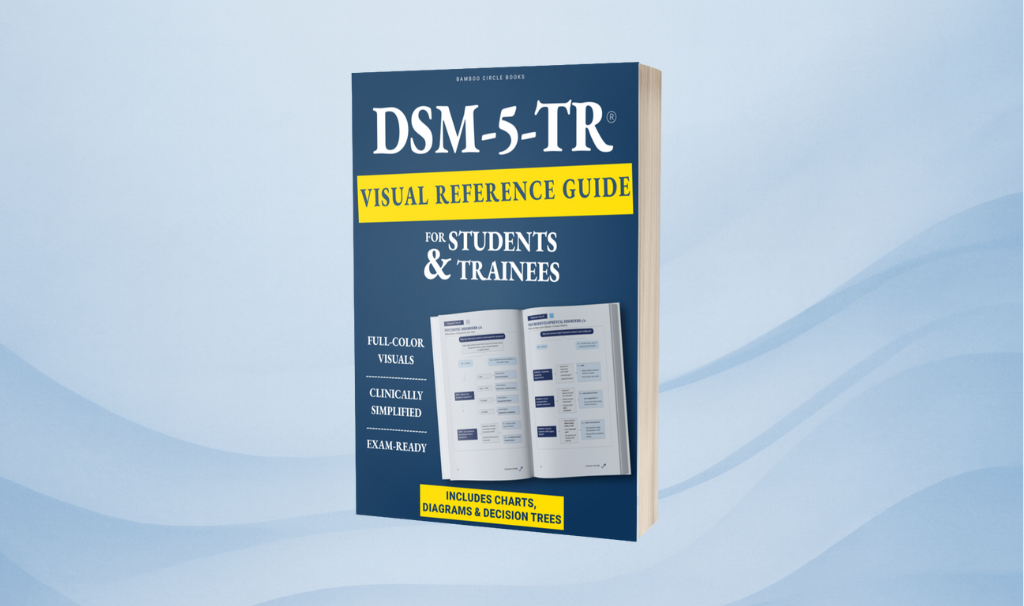Ever Thought: “Is This OCD or GAD?” Here’s How to Tell — Fast
The clock is ticking. Your case note’s half-written. You’re juggling symptom lists in your head, and your DSM feels more like a brick than a tool. Sound familiar?
That moment — when your brain hits a fog wall mid-diagnosis — isn’t about intelligence. It’s about how information is delivered.
And that’s exactly what the DSM-5-TR Visual Reference Guide for Students & Trainees was made to fix.
Built for how clinicians actually think.
This isn’t another dense wall of text. It’s a hands-on visual toolkit for students, interns, and early-career clinicians who need to move from confusion to clarity — fast.
Inside, you’ll find:
✅ Decision trees that act like GPS for diagnostic pathways
✅ Side-by-side symptom grids for common diagnostic dilemmas (Bipolar vs Borderline, anyone?)
✅ Color-coded categories to speed up recognition and recall
✅ Real case examples to boost pattern recognition
✅ A printable cheat-sheet pack for quick reference in study or clinic
Instead of brute-force memorization, you start building the mental shortcuts real clinicians rely on every day.
From overwhelmed to oriented — fast.
Let’s face it: the DSM-5-TR wasn’t built for students. It was built for standardization. This book bridges that gap by redesigning the content to reflect how our minds actually process complexity — visually, spatially, relationally.
Whether you’re prepping for a psych exam, writing SOAP notes, or shadowing in clinical settings, the guide keeps your head above water. You’ll move faster, second-guess less, and retain more.
A few favorite features from our readers:
“I finally understood how to separate anxiety from trauma.”
“The flowcharts saved me on my clinical simulation.”
“I use the cheat sheets every day in my practicum.”
This isn’t about shortcuts — it’s about clarity.
The DSM will always be complex. That’s a given. But your tools don’t have to make it harder.
Whether you’re studying for your first assessment class or prepping for real-world diagnosis, DSM-5-TR Visual Reference Guide for Students & Trainees is your mental map for navigating it all.
🛒 Get your copy on Amazon – and start thinking like a clinician.

